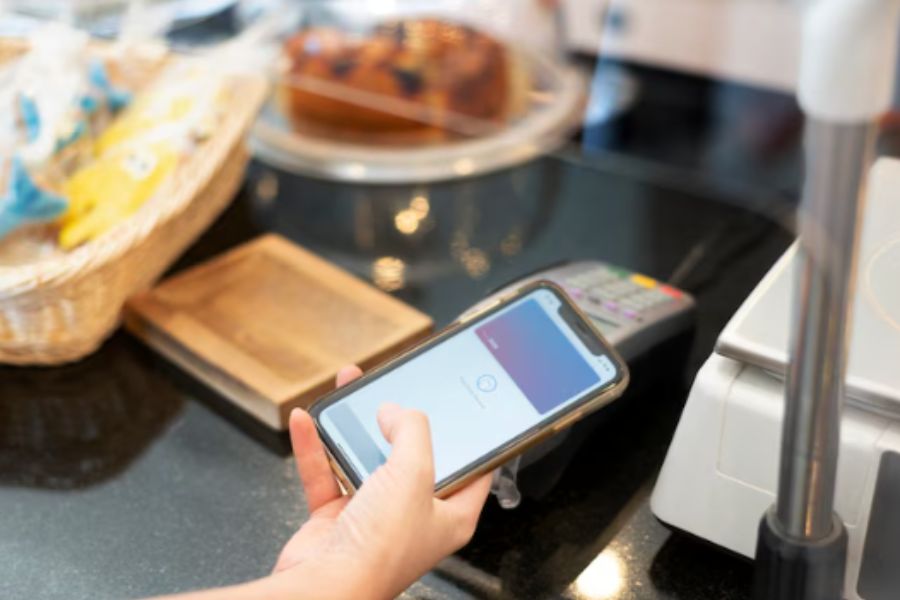In today’s fast-paced retail environment, businesses need efficient, reliable, and cost-effective point-of-sale (POS) solutions. Shopify POS is a popular choice for merchants who want to integrate their online and offline sales seamlessly. However, understanding the Shopify POS fees is essential for making an informed decision about whether it’s the right solution for your business.
In this article, we’ll break down everything you need to know about Shopify POS pricing, including:
- How Shopify POS fees work
- Key features & benefits
- Pros and cons of using Shopify POS
- Factors that affect Shopify POS costs
- Top alternatives to Shopify POS
- How to calculate Shopify POS fees for your business
Let’s dive in and explore the details to help you choose the best POS system for your business needs!
What is Shopify POS?
Shopify POS, introduced by the platform in 2013, serves as its point-of-sale solution. Recognizing the importance of offline sales channels for even the most successful e-commerce businesses, Shopify understood that having a physical presence is valuable.
You don’t necessarily need a traditional brick-and-mortar store to leverage the advantages of Shopify POS. Whether you’re selling your products at local markets on weekends or offering merchandise at special events, the Shopify POS app provides a unified system for in-person sales on a single platform. Compatible with Android and iOS devices, the app empowers business owners to conduct transactions virtually anywhere.
Using Shopify POS on a smartphone or tablet, you can:
- Create a dedicated shopping cart for each customer.
- Accept payments through a variety of methods.
- Generate receipts for transactions.
- Synchronize orders and inventory seamlessly across all sales channels.
It’s worth noting that there are different versions of Shopify POS. The basic functionality, often referred to as Shopify POS Lite, is included with all Shopify plans. For those seeking additional features, there’s a more advanced version known as Shopify POS Pro.
Key features of Shopify POS
The standard Lite edition of Shopify POS is well-suited for the majority of e-commerce store proprietors who engage in occasional offline selling and seek an economical solution for order processing that seamlessly syncs with their online store.
Despite its name, “Lite,” this version is a comprehensive and fully integrated point-of-sale system equipped with both software and hardware essentials for offline sales, all with minimal transaction fees. It boasts a range of excellent features, including:
- Mobile POS
- Email cart add-on
- Customer profiles
- Order and product management
- Custom payment types
- Support for popular payment methods
- Product QR codes
- External card terminals
- Gift cards and discounts
- Integration with Shopify hardware
- Cash flow management tools
- POS hardware and software
- Connectivity screens
- Free shipping and returns for POS tools
- Compatible accessories
- Customized checkout
- Global search
- Mobile checkout
- Taxes
- Custom discounts
- Custom receipts
- Auto reconciliation
These features complement the ones already provided for Shopify online stores within each Shopify plan.
Pros and cons of using the Shopify POS system
Before delving into the Shopify POS fees, weighing the pros and cons of adopting this system is crucial.
Advantages of using the Shopify POS system
Shopify’s advantages revolve around the exceptional features and user-friendly interface of the platform. Let’s delve into each of these aspects.
Ease of use
For customers, the process is as simple as browsing through your product catalog, choosing the desired product(s), swiping their credit card, and receiving their receipt.
Shopify POS is equally user-friendly for merchants due to its seamless integration of online and in-person sales. The software has a minimal learning curve, allowing you to get started in a matter of hours rather than days.
Seamless integration
Whether you operate a pop-up shop or a complete brick-and-mortar retail store, Shopify POS effortlessly links with Shopify card readers and compatible hardware accessories. This integration extends back to your ecommerce store, ensuring complete synchronization of orders and inventory.
If in case you make sales without internet access, once you regain online connectivity, the sales will automatically synchronize with your Shopify inventory.
Affordability
The Shopify POS hardware and software are included as standard components of both the Shopify and Advanced plans, with the additional costs being pretty reasonable transaction charges. With these plans, you also receive a complimentary cash drawer, receipt printer, and barcode scanner.
Should you decide to upgrade to the Pro version, the monthly cost increases slightly, but it should remain quite manageable, especially considering that the upgrade typically corresponds to increased sales volume.
Flexibility
Shopify POS provides a selection of five distinct POS tiers, each offering an extensive array of features tailored to meet the requirements of your customers, your business, and your budget.
The platform supports various payment methods for customers, and its flexibility allows you to transform any mobile device into a robust point-of-sale system. All you need to do is download the POS software onto your Android or iOS smartphone or tablet.
Shopping experience customization
A significant portion of the Shopify POS setup is customizable to align with your store’s specific requirements. For example, you can establish personalized payment methods, allowing you to accept less conventional payment options in addition to the standard ones.
Customer management is simplified through the creation of customer profiles, automatically generated with each new purchase. Customers can conveniently access their frequently used apps, discounts, and products for swift checkout.
Furthermore, with a vast selection of over 6,000 apps available on the Shopify App Store, enhancing the functionality of your POS solution is easily achievable.
Sales and marketing support
Several features of Shopify POS contribute to streamlining the sales and marketing processes. One notable aspect is the ability to provide shoppers with special discounts and promotions, whether it be on specific products or applied to an entire order.
This functionality empowers merchants to implement targeted strategies, enhancing their promotional efforts and optimizing the customer shopping experience. Whether through product-specific incentives or broader order-level discounts, Shopify POS offers versatile tools to support effective sales and marketing campaigns.
Trackability
With Shopify’s POS, you can to track daily sales, orders, website traffic, and inventory directly from your dashboard, ensuring continuous awareness of incoming data and its impact on your bottom line.
Generate the necessary reports, such as identifying top-selling products, and easily convert them into printable spreadsheets. Additionally, you can employ filters to refine your sales data based on criteria like a staff member, location, date, customer, and more. This feature-rich reporting system provides valuable insights for effective business monitoring and decision-making.
Disadvantages of using Shopify POS
We’ve gained a comprehensive understanding of Shopify’s strengths. However, no platform is flawless. Let’s examine some of the drawbacks associated with using Shopify and consider their potential implications for your online business.
Costing
Prospective store owners, especially those who are new or in the early stages, might perceive Shopify as relatively expensive, prompting them to weigh the value of the investment. Shopify offers three primary pricing plans, as outlined below. Additionally, there is a Starter plan priced at $5 and a Shopify Plus package starting at $2,000 per month.
While the Starter plan is budget-friendly, its capabilities are somewhat limited. It is most suitable for those planning to sell on social media by directing buyers to a relatively basic store. If you desire more advanced features such as theme customization or a blog, opting for the Basic plan or higher is necessary.
Restricted design customization choices
While Shopify provides customization options ranging from drag-and-drop interfaces to back-end coding, the extent of customization is constrained, mainly due to the use of Shopify’s in-house coding language, Liquid.
Irrespective of a seller’s proficiency in coding, familiarity with the Liquid language is likely to be a new challenge. This implies that if you aim to make detailed modifications to your Shopify website, you’ll need to invest time in learning the platform’s coding language. From custom forms to basic blogging features, coding becomes a prerequisite for any adjustments beyond the standard offerings.
Shopify payment processing
Shopify Payments is not accessible in all nations, currently being limited to 23 countries, including the US, New Zealand, Australia, Hong Kong SAR, Japan, Singapore, and a majority of European countries.
If you find yourself in a region where Shopify Payments is unavailable, you must resort to third-party payment gateways, incurring a transaction fee of up to 2% (or up to 5% on the Starter plan). Furthermore, Shopify transactions are subject to credit card processing fees, reaching up to 2.9% per transaction in the US.
Shopify POS fees reviewing
Understanding the intricacies of Shopify POS fees is crucial for businesses planning to integrate this system into their operations. As outlined by AcquireConvert, Shopify offers two main plans: Shopify POS Lite and Shopify POS Pro.
Shopify POS Lite
The associated costs for each of the four Shopify plans are outlined below:
- Shopify Lite Plan:
- Monthly Cost: $9
- Includes only a SELL button, suitable for platforms like Facebook stores.
- Transaction Fee: 2.7% for every purchase.
- Requires the use of one of Shopify’s payment gateways.
- Basic Shopify Plan:
- Monthly Cost: $19
- Online store with credit card rates of 2.9% + 30¢
- In-person purchases via Shopify POS incur a 2.7% transaction fee.
- Standard Shopify Plan:
- Monthly Cost: $49
- In-store purchases have a credit card rate of 2.6% + 30¢.
- In-person purchases via Shopify POS have a rate of 2.5% + 0¢.
- An additional fee of 1.0% for external payment gateways.
- Advanced Shopify Plan:
- Monthly Cost: $299
- In-store purchases have a credit card rate of 2.4% + 30¢.
- In-person purchases via Shopify POS have a rate of 2.4% + 0¢.
- Additional fee of 0.5% for external payment gateways.
For Shopify Plus plan subscribers, the costs are tailored to their specific requirements, and the plan includes access to the Shopify POS Pro version.
Shopify POS Pro
As previously mentioned, it is possible to enhance the POS version included in any Shopify plan by upgrading to the Pro version, which offers additional features. The upgrade incurs an additional fee of $89 per month per location, in addition to your regular Shopify plan subscription.
It’s important to note that Shopify Plus subscribers automatically have access to Shopify POS Pro as part of their plan.
3 important factors impacting Shopify POS fees
The cost of using Shopify POS go beyond the subscription plans, with three significant factors influencing the fees: software, hardware, and payment processing. Understanding these factors is crucial for businesses to make informed decisions regarding their POS system.
Software
The software components of Shopify POS include the features and capabilities that businesses leverage for their operations. Depending on the complexity of the required functionalities, businesses may opt for the Lite or Pro plan, each with its associated costs.
Hardware
The hardware encompasses the physical devices needed to run the Shopify POS system. This includes point-of-sale terminals, barcode scanners, receipt printers, and more. The type and number of hardware components contribute to the overall cost of implementing Shopify POS.
Payment
Shopify charges transaction fees for payments processed through the platform. Businesses need to be aware of these fees, including credit card rates and any additional charges imposed by third-party payment providers.
How to calculate Shopify POS fees?
The fees associated with Shopify POS are determined by the payment method selected by your customers and the specific Shopify pricing plan to which your store is subscribed.
The following is a step-by-step guide for calculating Shopify POS fees:
Shopify credit card rate
This fee represents the charge imposed by Shopify for processing major credit card payments in your store. The applicable rate depends on your chosen pricing plan and whether the transaction occurs online or in person.
To illustrate, using the table provided earlier, if you are subscribed to the Basic Shopify plan, the Shopify credit card rate is 2.9% + $0.30 for online transactions and 2.7% for in-person transactions.
Third-party payment provider fee
When you utilize an external payment gateway, distinct from Shopify Payments, to handle customer payments, Shopify imposes a fee, and this fee varies based on your pricing plan.
As an illustration, if you are on the Basic Shopify plan and opt to use PayPal for accepting payments, the fee from the third-party payment provider is 2%.
Additional cost
The supplementary expense refers to any additional fee that your payment gateway may impose for utilizing their services. This charge is discretionary and is contingent upon the terms and conditions established by your payment gateway.
For instance, if you accept payments in a different currency or from another country, PayPal might apply charges such as a currency conversion fee or a cross-border fee.
Alternative to Shopify POS
While Shopify POS offers a robust solution, businesses may explore alternatives that better align with their specific needs. Here are some noteworthy alternatives:
Shopify POS Alternative: ConnectPOS
ConnectPOS stands out as a highly capable and flexible alternative to Shopify POS, offering an extensive range of features to streamline retail operations. With seamless integration into Shopify, ConnectPOS enables retailers to efficiently manage both online and physical stores through a unified platform.
Cost:
ConnectPOS offers a cost-effective solution starting at just $39 per month, making it an ideal choice for small and medium-sized enterprises (SMEs).
Features:
- Comprehensive inventory management system: Advanced tools for real-time tracking and control of stock levels across various sales channels.
- Multi-store support: Tailored for multi-store retailers, allowing centralized data management through a unified dashboard.
- Seamless integration with Shopify: Efficiently manages both online and physical stores through a unified platform.
- Customizable platform: Offers the flexibility to customize features and functionalities according to specific business requirements.
- Scalability for enterprises: Provides options for enterprises with specific needs to customize the platform accordingly.
- Versatility and robustness: Ideal for businesses of all sizes, offering a scalable and effective retail experience.
Shopify POS Alternative: Square POS
Square point-of-sale system is accessible on both iOS and Android devices. Similar to Shopify POS, it offers numerous advantages for managing a brick-and-mortar retail store.
Cost:
Square POS software comes with no usage fees. With no setup fees or monthly charges, you only pay when processing payments.
| Price | |
| Software | $0 per month. |
| Hardware | Free when you sign up for an account. Additional hardware costs vary. |
| Processing rate | 2.6% + 10¢ per tap, dip, or swipe |
| Monthly fee | $0 per month |
Features:
The Square POS app is well-suited for various business volumes and encompasses standard features including:
- Digital receipts with customer feedback via the receipt.
- An intuitive grid that displays products and categories on the left-hand side, and sales receipts on the right-hand side.
- Support for product variants, enabling effective item tracking.
- Operation in an offline mode, beneficial for small retailers in the event of a weak internet connection. This feature allows businesses to smoothly control their temporary store operations.
In summary, Square POS stands out as a favorable alternative to Shopify POS. A comparison of Shopify POS vs. Square POS provides an overview of several distinguishing features.
Shopify POS Alternative: Vend POS
Vend POS is a cloud-based solution that provides flexibility for businesses to manage their operations from anywhere. It offers advanced inventory management and reporting capabilities.
Cost:
| Options | Pricing |
| Lean: For your essential business needs | $1188 annual ($99/month) or $119/month |
| Standard: Ideal for omnichannel businesses that want to grow and expand their business everywhere | $1788 annual ($149/month) or $179/month |
| Advanced: More advanced tools for businesses looking to go further and sell everywhere | $2748 annual ($229/month) or $299/month |
| Enterprise: Designed for high-volume retailers and businesses | Contact |
Features:
- Key functionalities include Retail POS, Registers, Integrated Payments, Accounting, eCommerce, Loyalty, and Analytics.
- Additional services and features comprise 24/7 customer support, Launch services, API access, Serialization, Dedicated account manager, Premium API access, and Customized onboarding.
Shopify POS Alternative: Lightspeed POS
Lightspeed POS offers three appealing advantages: versatile solutions for managing multiple systems, the capability to handle remote work and all tasks on a single device, and user-friendly, modern tools.
Cost:
Lightspeed POS offers service packages with enhanced features tailored to the requirements of users:
| Price | |
| Lean: For your essential business needs | $69/month |
| Standard: Ideal for omnichannel businesses | $119/month |
| Advanced: More tools for businesses looking to go further | $199/month |
Features:
By employing Lightspeed POS, you can enjoy numerous advantages, including:
- Employees can check out from any location within the store.
- Customers can process refunds without the need for a credit card.
- Product catalog import is simplified through the option to upload a CSV or Excel file.
- The app offers over 10 report templates for your convenience.
Conclusion
In conclusion, understanding Shopify POS fees is a critical aspect of implementing an effective point-of-sale system. Businesses should carefully assess their requirements, considering factors such as software, hardware, and payment processing, to make informed decisions.
Additionally, exploring alternatives to Shopify POS provides businesses with the flexibility to choose a solution that best aligns with their unique needs. If you have any questions, don’t hesitate to contact us for support!



